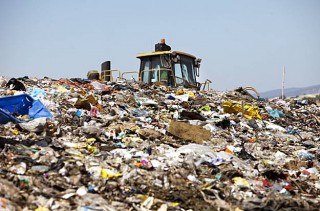
On Martin Luther King Jr. Day (January 18th), CNN did an investigation on the environmental injustice still plaguing many poor African American communities. The environmental injustice, sadly, plays itself out in the form of exposure to toxic chemicals; specifically, a report released by the Center for Effective Government—titled “Living in the Shadow of Danger: Poverty, Race, and Unequal Chemical Facility Hazards”—indicates that people of color are essentially twice as likely to live within one mile of some of the most dangerous industrial facilities.
In addition, poor residents are also more likely to live close to these areas. And not only are these individuals in danger of a severe catastrophe occurring with these facilities at any given time, they also face more general pollution released into the air, water, and land every day, and all of the many health repercussions due to exposure to that pollution, including but not limited to breathing issues, headaches, and chest pains.
Deliberate Acts of Environmental Injustice in Louisiana
Starting around the time of World War II, chemical companies specifically targeted Mossville, Louisiana, to site their facilities precisely because the town had been founded by freed slaves and current residents lacked the political power to prevent the facility from establishing itself there. Today, many polluting plants infect the community and the residents suffer from alarming cancer rates compared to the rest of the nation.
Federal, State, and Local Policies Are Not Enough
In many other areas, residents have no choice but to live close to hazardous facilities. No one purposely locates themselves in neighborhoods where their children are in danger and breathe dirty air.
But how is it that these communities are not protected from this injustice? For one, local governments still do not mandate that “buffer zones” be placed around these facilities so that they do not negatively affect schools and homes. These same localities should also assess the potential impact of releases from these facilities, including the potential impact on cumulative health concerns and environmental justice concerns.
At the federal level, the U.S. Environmental Protection Agency should be requiring these companies to use safer chemicals and cleaner technologies. This will hopefully be included in the current effort to update the agency’s rules for hazardous facilities.
Environmental Hazard Attorneys Protecting Vulnerable Communities
The presence of toxic contamination and poor health effects is a pattern in many poor, African American communities. Many companies—as well as local and federal governments—are not doing enough to safeguard the health of all communities. And what results when companies and governments are negligent? Many tragic stories of illness—and a despairing level of it for those who do not have the resources to fight toxic contamination threats in general.
The attorneys of Harrell & Nowak have spent years litigating against negligent polluting parties. If you need legal assistance with any environmental hazard issue, contact us for a free consultation today.
